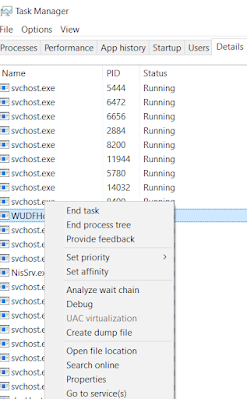System Design Basics || Latency vs Response Times
When it comes to measuring the performance of systems, especially in networking and software engineering, the terms "latency" and "response time" are often used interchangeably. However, these terms have distinct meanings, and understanding their differences is essential for optimizing system performance and troubleshooting effectively.
What is Latency?
Latency refers to the time it takes for a single data packet to travel from the source to its destination. It is the delay introduced by the system—be it due to network transmission, processing time, or other factors.
In simpler terms, latency measures the delay between the moment a request is made and when it begins to be processed. Latency is often measured in milliseconds (ms).
Example of Latency:
Imagine you send a request to load a webpage. The latency is the time it takes for the initial request to travel from your computer to the server hosting the webpage. In the video, the example of a video conferencing tool highlights latency, as even small delays can disrupt real-time communication.
What is Response Time?
Response time is the total time it takes to complete a request—from the moment a request is made until the final response is received. This includes both latency and the processing time taken by the server or system to handle the request.
Example of Response Time:
Using the webpage example, response time would be the time it takes from sending the request to receiving the fully loaded webpage, including both the latency and the server’s processing time. As demonstrated in the video, a gaming application’s response time includes the time taken for player actions to be processed and rendered on the screen.
Key Differences Between Latency and Response Time
| Aspect | Latency | Response Time |
|---|---|---|
| Definition | Time for a request to travel to the destination. | Total time from request to response completion. |
| Scope | Measures delay only. | Includes latency and processing time. |
| Example | Time to send data to the server. | Time to send, process, and receive data. |
| Impact | Influences response time. | Directly affects user experience. |
Real-World Scenarios
The video explains the significance of latency and response time with practical scenarios:
-
High Latency, Low Response Time:
- A messaging app might have high latency (due to a distant server), but optimized server processing ensures a quick overall response time. For example, chat messages might take a few milliseconds to start sending but are processed almost instantaneously once they reach the server.
-
Low Latency, High Response Time:
- A local server with minimal latency could have a slow response time due to inefficient code or heavy data processing. For instance, a server running complex queries might delay the final response even though the request reached it quickly.
-
Why It Matters:
- Gamers care deeply about latency because even a slight delay can affect gameplay. On the other hand, someone streaming a video may not notice slight latency as long as the video buffers quickly and plays smoothly.
Watch the Video
For a deeper understanding of latency and response time, including practical tips for measuring and optimizing these metrics, watch this detailed explanation:
How to Measure and Optimize Latency and Response Time
-
Measuring Latency:
- Use tools like
pingor network monitoring software to measure the time it takes for packets to travel between endpoints. - Monitor geographic distances and consider CDN (Content Delivery Network) solutions to reduce latency.
- Use tools like
-
Measuring Response Time:
- Use tools like
Postman,JMeter, or application performance monitoring (APM) tools to measure end-to-end response times. - Pay attention to bottlenecks in server-side processing or database queries.
- Use tools like
-
Optimization Tips:
- Reduce Latency:
- Deploy servers closer to users.
- Optimize network configurations and reduce intermediate hops.
- Improve Response Time:
- Refactor and optimize server-side code.
- Use caching mechanisms to reduce redundant processing.
- Implement asynchronous processing for tasks that don’t require immediate results.
- Reduce Latency:
Why Understanding Latency and Response Time Matters
Latency and response time directly impact user experience. A high latency system might feel sluggish, even if the response time is reasonable, while a system with a fast response time but unpredictable latency can frustrate users. Balancing these metrics is essential for building performant and user-friendly systems.
Suggested Read : Fault vs Failure
Conclusion
Understanding the difference between latency and response time enables software engineers to identify performance bottlenecks and optimize systems effectively. Whether it’s a real-time application like gaming or a web-based service, knowing where to focus—reducing latency, improving server efficiency, or both—is key to delivering a great user experience.
How do you optimize latency and response time in your projects? Share your strategies in the comments!

Comments
Post a Comment